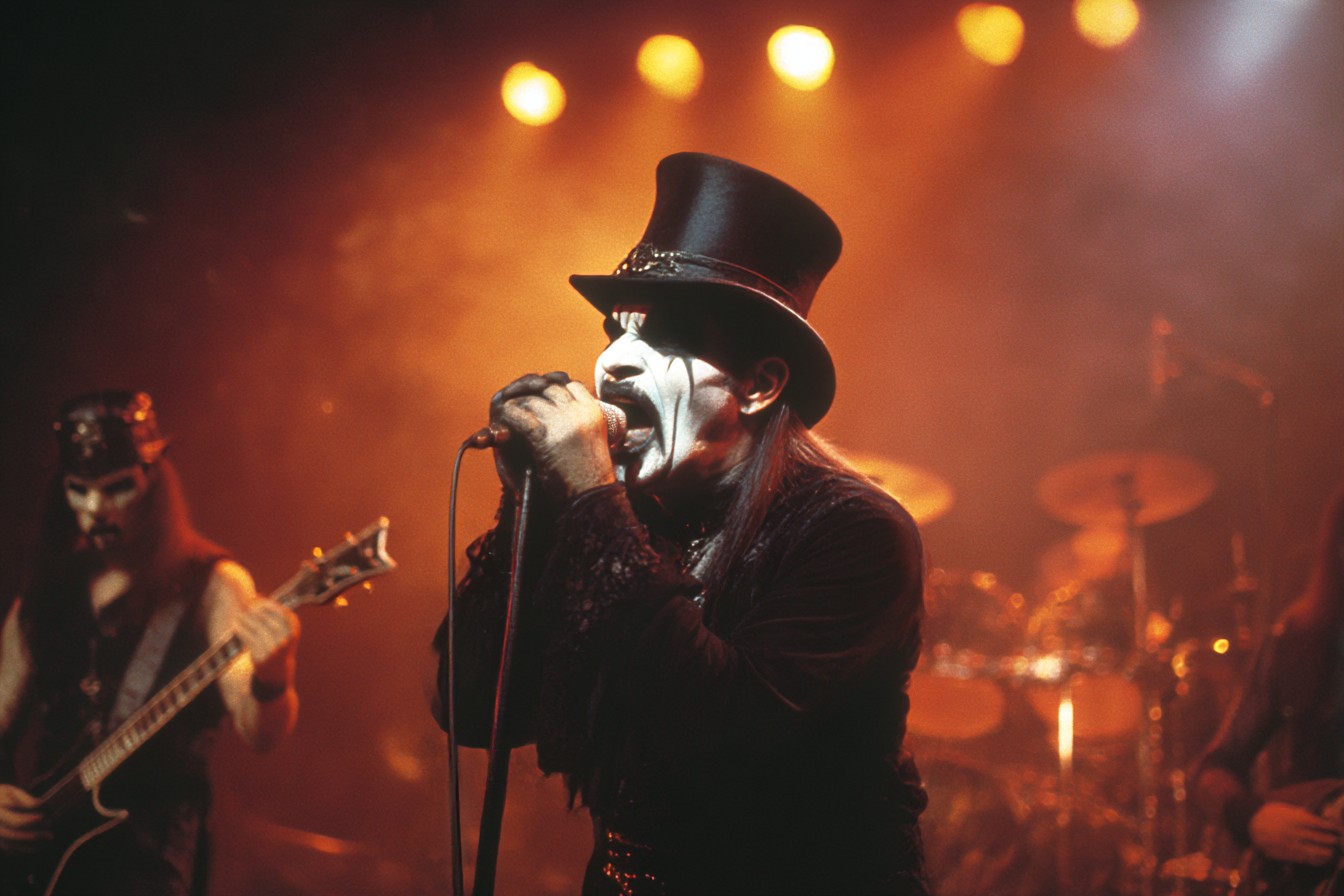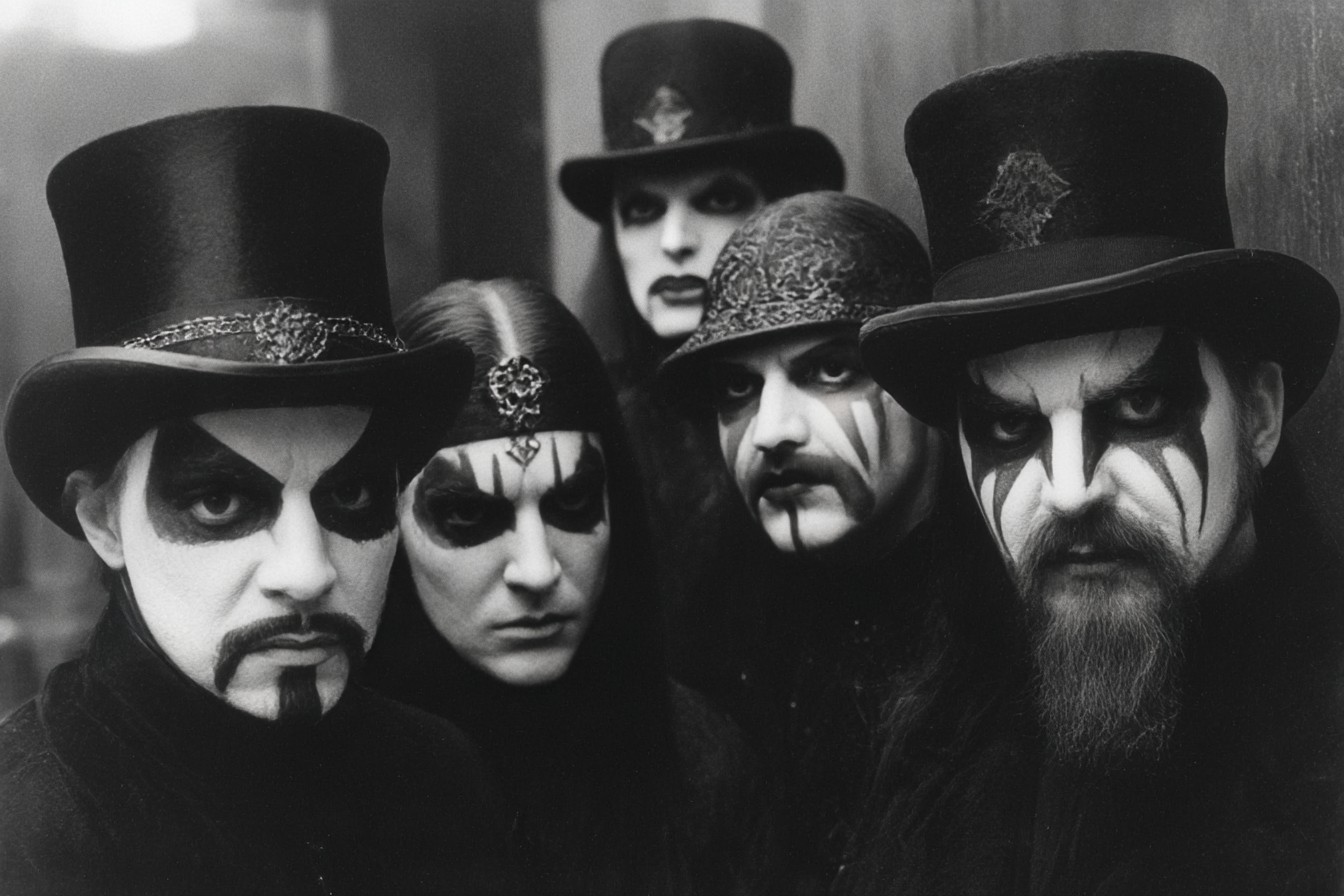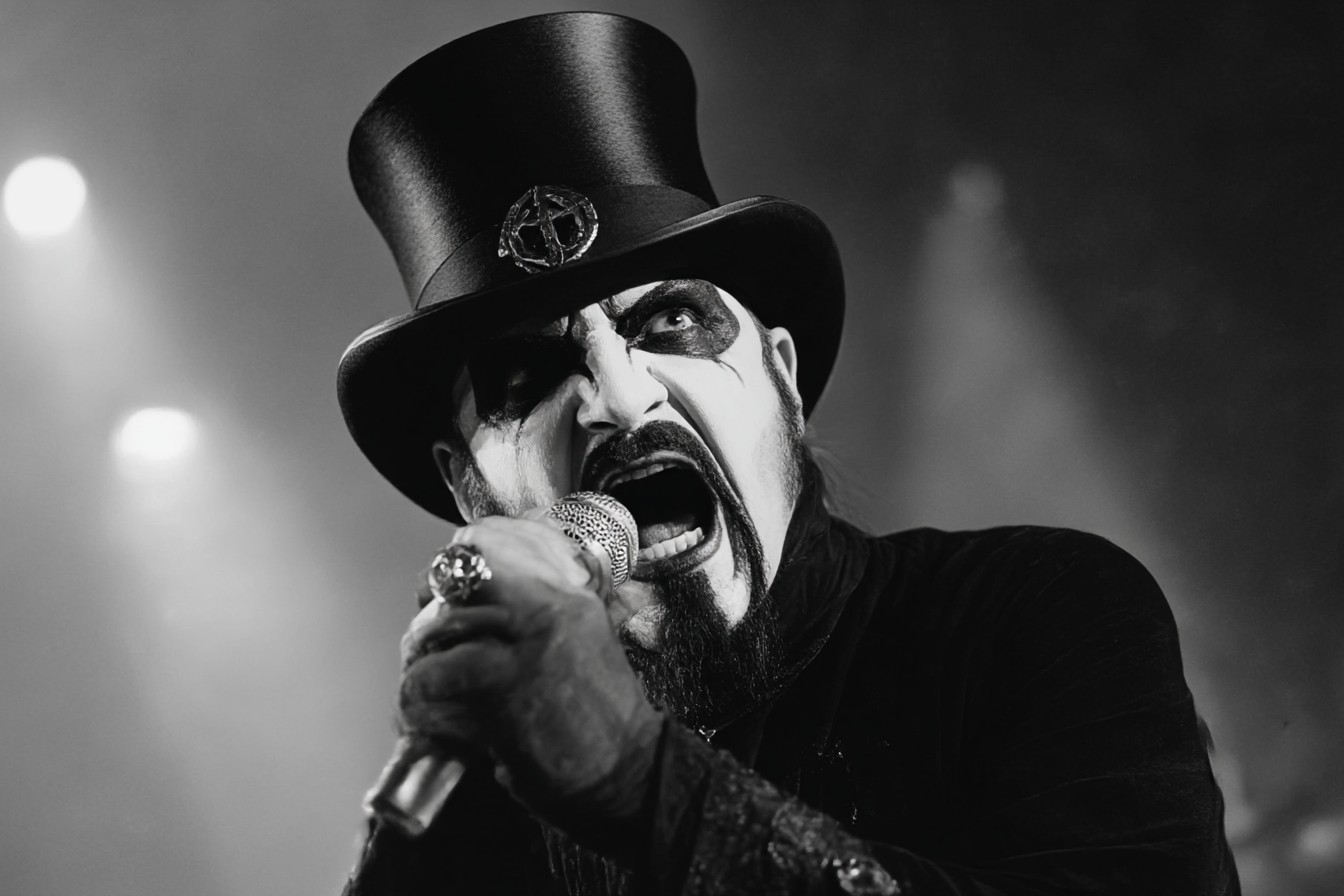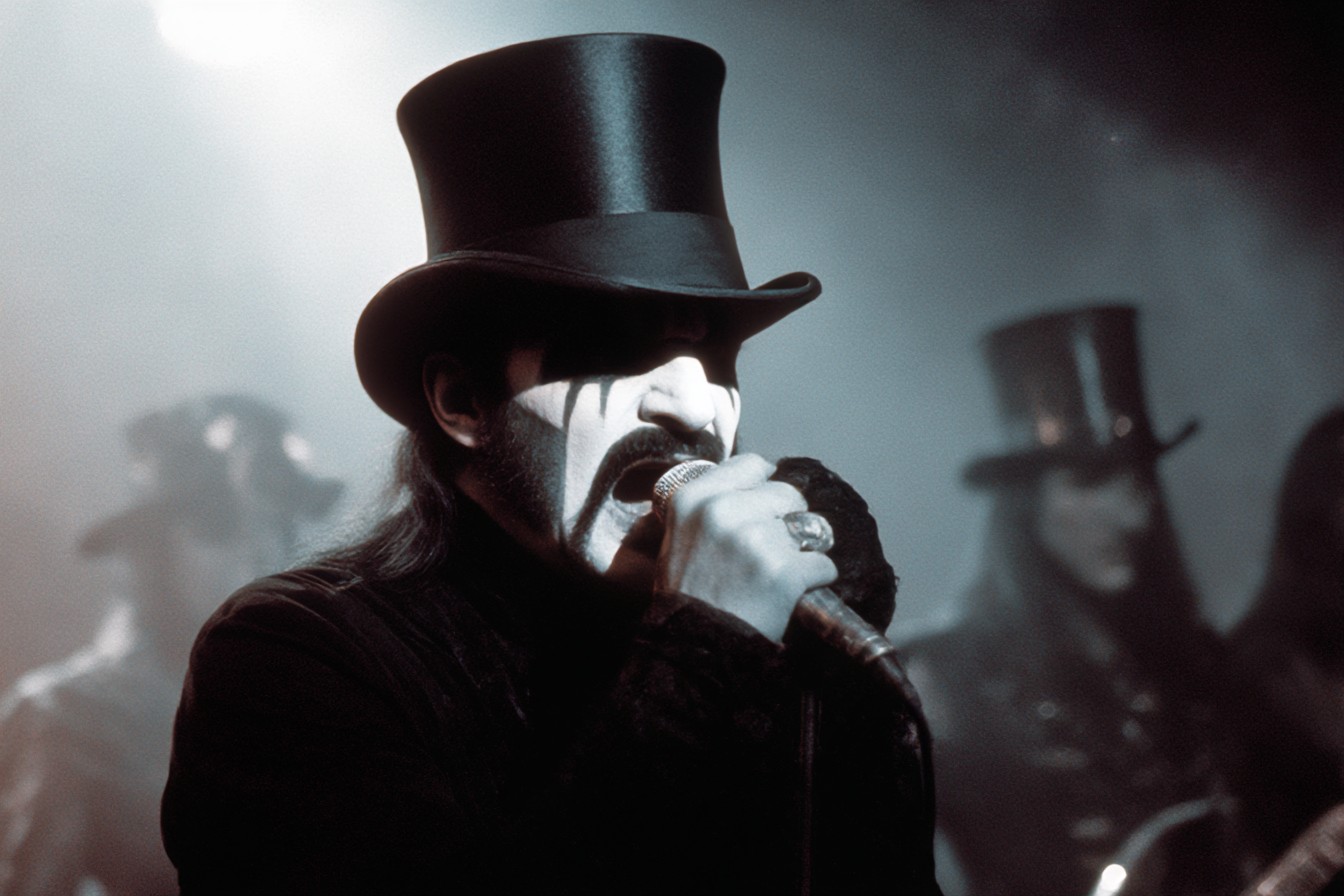The first time I heard King Diamond’s falsetto, I was seventeen and alone in my bedroom with a dubbed cassette that had been passed to me by Kevin Sullivan, the only other kid at West Hill High who seemed to understand that metal extended beyond whatever was getting played on Headbanger’s Ball. The tape had no case, just a scrap of lined paper with “Mercyful Fate – Don’t Break the Oath” scrawled in Kevin’s practically illegible handwriting. “Danish black metal,” he’d said mysteriously, as if imparting forbidden knowledge. “Prepare to have your mind blown.”
Mind blown doesn’t begin to cover it. When those initial guitar harmonies gave way to King Diamond’s otherworldly wail in the opening track “A Dangerous Meeting,” I nearly fell off my bed. What the hell was this? The voice seemed to defy human physiology—soaring into registers I didn’t even know were possible for a male vocalist, then plunging into theatrical growls and sinister narrative passages. It was operatic, bizarre, completely over-the-top, and absolutely captivating. I must have rewound that section five times before letting the song continue, just trying to process what I was hearing.
This was 1986, two years after the album’s release, and I was a kid who thought he’d already mapped the boundaries of heavy music. I’d graduated from Iron Maiden and Judas Priest to the faster, heavier sounds of early Metallica and Slayer. I’d even dipped my toes into the first wave of death metal with Possessed’s “Seven Churches.” But nothing had prepared me for the theatrical, progressive, occult-drenched experience that was “Don’t Break the Oath.” It wasn’t just heavy—it was bizarre, complex, and completely committed to a theatrical vision that made even Priest’s leather-and-studs aesthetic seem tame by comparison.
The cassette became my secret obsession. I’d listen to it late at night with headphones, partly because the subject matter felt genuinely dangerous in my Catholic household (if Mom had known about lyrics involving literal pacts with Satan, my entire music collection would have ended up in the trash), and partly because the music demanded that kind of focused, immersive attention. This wasn’t background music. It was a dark opera in metal form, with King Diamond as its macabre maestro.
What struck me immediately about “Don’t Break the Oath,” beyond Diamond’s supernatural vocal range, was how musically sophisticated it was. While many metal bands of the era were focusing on speed and aggression, Mercyful Fate was crafting these complex, multi-part compositions with tempo changes, intricate dual guitar harmonies, and atmospheric passages that created genuine suspense. Songs like “The Oath” and “Nightmare” played out like miniature horror films, complete with exposition, climax, and denouement.
The guitar work of Hank Shermann and Michael Denner remains some of the most criminally underrated playing in metal history. These guys weren’t just riffing—they were composing, creating these intricate melodic conversations between their instruments. The solo trade-offs in “Desecration of Souls” still give me goosebumps, combining neoclassical precision with blues-based emotion in a way that few guitarists have matched since. In a just world, Shermann and Denner would be mentioned in the same breath as Smith-Murray or Tipton-Downing when discussing legendary metal guitar duos.
Then there’s the rhythm section—bassist Timi Hansen and drummer Kim Ruzz providing a rock-solid foundation that allowed the songs to venture into progressive territory without losing their heavy impact. Listen to how they navigate the time signature shifts in “Night of the Unborn”—locking together with a precision that keeps the song grounded even as it spirals through its occult narrative.
But of course, it’s impossible to discuss Mercyful Fate without focusing on King Diamond himself—the band’s visual and vocal centerpiece, and the architect of its theatrical approach. The corpse paint, the inverted crosses, the elaborate stage persona—these elements would become genre staples in the Scandinavian black metal scene years later. But in 1984, this level of theatrical commitment was revolutionary, predating even the more extreme visual aesthetics that would emerge in the following decade.
And that voice! I’ve spent more hours than I care to admit trying to analyze exactly how King Diamond achieves his vocal effects. The falsetto is the obvious standout—piercing and powerful, used not just as an occasional flourish but as a primary vocal style. But it’s the way he combines it with narrative passages, growls, and mid-range singing to create distinct characters within the songs that elevates it from mere technique to genuine artistic expression. In songs like “The Oath,” he’s not just singing—he’s playing multiple roles in a mini-theatrical production, using vocal shifts to move between narrator and character voices.
The occult lyrics were shocking for the time, going far beyond the vague Satanic imagery that bands like Venom were deploying for shock value. Diamond wasn’t just throwing around pentagrams and devil references—he was constructing detailed occult narratives that suggested genuine knowledge of esoteric traditions. Whether this stemmed from actual practice or simply extraordinary commitment to his art remains part of the King Diamond mystique. Either way, it created an atmosphere of authentic darkness that few bands have matched.
I remember trying to explain Mercyful Fate to my metalhead friends who hadn’t heard them yet. “It’s like if Judas Priest and Black Sabbath had a baby, and that baby was raised by a coven of warlocks who sent it to opera school.” Even that ridiculous description doesn’t quite capture the unique alchemy of “Don’t Break the Oath.”
The album’s influence on extreme metal can’t be overstated, though it often goes unacknowledged. Without Mercyful Fate, the entire Scandinavian black metal scene of the early ’90s might have sounded completely different. The theatrical presentation, the occult themes, the corpse paint—all became fundamental elements of black metal as pioneered by bands like Mayhem, Emperor, and Darkthrone. Even if the musical style evolved in a harsher, more primitive direction, the theatrical DNA established on “Don’t Break the Oath” remained.
Beyond black metal, you can hear Mercyful Fate’s influence in virtually every metal band that incorporates theatrical elements or complex song structures. Ghost’s entire career is essentially a more accessible continuation of the template Mercyful Fate established. Elements of King Diamond’s vocal approach can be heard in extreme metal vocalists from Dani Filth to Ihsahn, who use dramatic shifts in vocal register to create atmosphere and character. And the band’s progressive tendencies paved the way for the technical death metal that would emerge in the following decades.
I had the surreal experience of interviewing King Diamond in 2007, over twenty years after that first mind-blowing listening session in my teenage bedroom. We were talking about his solo work, but I couldn’t resist asking about “Don’t Break the Oath” and what he’d been trying to achieve with those groundbreaking vocal techniques.
“I never saw limits,” he told me, with that slight Danish accent that appears when he’s speaking seriously. “Opera singers could do these incredible things with their voices, so why couldn’t that work in heavy metal? The stories I wanted to tell needed different characters, different emotions. The falsetto could express terror or power or the supernatural—whatever the story needed.”
That commitment to storytelling is what makes “Don’t Break the Oath” more than just a collection of songs—it’s a complete work, almost concept-album-like in its thematic cohesion. Each track contributes to an overall atmosphere of occult mystery and supernatural dread. The album doesn’t just present songs about the dark arts; it creates a fully realized world where such forces are omnipresent and active.
I’ve revisited “Don’t Break the Oath” countless times over the decades, and what strikes me now is how fresh it still sounds. Unlike many albums from the mid-80s, it hasn’t dated itself through production trends or genre constraints. There’s a timeless quality to the songwriting and performance that transcends its era. The guitar tones are perfect—heavy enough to carry the music’s dark themes but clean enough to showcase the intricate playing. The drum sound is natural and powerful. And King Diamond’s vocals exist in their own unique space, untethered from trends or contemporaries.
The album’s legacy lives on in unexpected places. I was at a listening party for a new progressive metal album a few years ago, and found myself in conversation with the band’s vocalist—a guy half my age who’d grown up on a diet of technical death metal and djent. When I mentioned my long-standing love for Mercyful Fate, his eyes lit up.
“‘Don’t Break the Oath’ changed everything for me,” he said. “Before that, I thought extreme vocals were just about being as harsh as possible. King Diamond showed me they could be technical, expressive, almost… beautiful, in a twisted way.”
That’s perhaps the most accurate description I’ve heard—”beautiful, in a twisted way.” It captures the strange contradiction at the heart of Mercyful Fate’s masterpiece: music that deals with the darkest themes imaginable, presented with almost baroque elegance and sophistication. The refined serving the profane. The technical elevating the transgressive.
There’s a moment in “The Oath” when King Diamond’s falsetto soars over a particularly intricate guitar harmony, creating this perfect synthesis of the beautiful and the sinister. Whenever I hear it, I’m transported back to that first listen—teenager me sitting wide-eyed in a darkened bedroom, realizing that metal could be more ambitious, more theatrical, more complex than I’d ever imagined. In that moment, Mercyful Fate weren’t just pushing boundaries—they were obliterating them, creating a template for theatrical metal that bands are still drawing from four decades later.
The oath may instruct us not to break it, but Mercyful Fate broke practically everything else—vocal conventions, compositional norms, visual boundaries—and metal has been all the richer for their blasphemy.





Leave a Reply